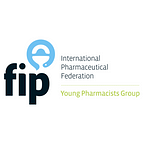CHALLENGES TO THE AVAILABILITY OF NEW MEDICINES IN LOW AND MIDDLE-INCOME COUNTRIES
By: Onyeka Obidiegwu, M.Pharm (New Medicines SIG Liaison)
Medicine availability is a long-standing issue that cannot be overstated because a drug is only useful when it is available to address the specific issues for which it was designed. The cost of medicines is a big problem in low- and middle-income countries (LMICs), where they can make up to 70% of all healthcare costs. This is made worse by the fact that non-communicable diseases (NCDs) like diabetes and high blood pressure are becoming more common. One of the first steps towards maintaining the availability of drugs was the Alma Alta declaration at the WHO/UNICEF-sponsored conference on Primary Health Care of 1978. A cross-sectional study found that 5 years after their approval in the US, 15% of novel drugs (5 of 34) were approved in all countries where they were tested; among the 70 countries contributing research participants, 7% (5 countries) received market access to the drugs they helped test within 1 year of US approval and 31% (22 countries) did so within 5 years. Approvals were faster in high-income countries, and access was lowest in African countries.
This article will talk about the fact that multinational companies don't do much to get marketing approvals in low- and middle-income countries (LMICs) and that there isn't a good insurance structure, which means that the government doesn't do much to pay for health care, especially for people with rare diseases. Although marketing access does not guarantee that a patient can afford a medicine or vaccine or that there is a reasonable ample supply of a medical product, it is a critical precondition for access. In the study done by Jennifer Miller and colleagues in 2012 in which 563 clinical trials for which location data were available were examined, their research confirmed the hypothesis that many countries contributing research participants for FDA drug approvals would not have market access to those drugs even 5 years after FDA approval. This seems to be due to the focus on high-income countries which yield more sales revenue and pose a better chance of returning the heavy investment in research and development. There is a need for an addition to Corporate Social Responsibility of building schools and hospitals at the clinical trial site, and getting marketing approvals so these countries also benefit from these life-saving drugs be given priority. Everyone should have a chance at access to new drugs like Cabenuva for HIV which greatly increases adherence and Adbry for moderate to severe atopic dermatitis which greatly improves the quality of life for clients.
For the vast majority of people living in LMICs where most governments are not providing universal health coverage (UHC) and without financial protection coverage, reliance on out-of-pocket payments in cases of health emergencies or serious illness is a must. A health issue might be the difference between death and poverty. A complex challenge is to determine the underlying financing mechanism for a country’s health system with the undoubted result being poor funding yields less coverage. For example, according to a report from Statista, about 3% of Nigerians have health insurance which is provided mostly by employers. Of this 3%, men have more insurance coverage than women as 56.7% of those covered are male against 43.3% of the women. Advocacy towards more funding for health and strengthening of existing national insurance systems should take the forefront of health policy discussions.
Health For All is a goal of the World Health Organization (WHO), which has been popularised since the 1970s and which envisions securing the health and well-being of people around the world. It is the basis for the World Health Organization’s primary healthcare strategy to promote health, human dignity, and enhanced quality of life. This also aligns with FIP Developmental Goal 10: Equity and Equality and Goal 18: Access to medicines, devices, and services. In other to achieve health for all, medicines available to all is a pre-requisite.
REFERENCES
1. Jennifer E. Miller, Michelle M. Mello, Joshua D. Wallach, Emily M. Gudbranson, Blake Bohlig, Joseph S. Ross, Cary P. Gross, Peter B. Bach. Evaluation of Drug Trials in High-, Middle-, and Low-Income Countries and Local Commercial Availability of Newly Approved Drugs doi:10.1001/jamanetworkopen.2021.7075
2. https://www.leadway.com/insurance-nigeria-statistics
3. Cameron A, Ewen M, Ross-Degnan D, Ball D, Laing R. Medicine prices, availability, and affordability in 36 developing and middle-income countries: a secondary analysis. Lancet (2009) 373:240–9. DOI: 10.1016/S0140–6736(08)61762–6
4. Ofori-Asenso R, Agyemang AA. Irrational use of medicines — A summary of key concepts. Pharmacy (2016) 4:35. DOI: 10.3390/pharmacy4040035
